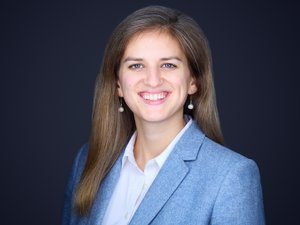
What do we do with a million people in the event of an emergency evacuation?
This is the question facing emergency management personnel during disasters, and the question that prompted Adam Huminsky to start Harmany. The Harmany app allows people who are forced out of their homes to find shelter instantaneously with reliable housing connections.
The venture started in 2017 following Hurricanes Irma and Harvey, which displaced a combined 7 million people from Florida and Houston.
“We listened to many of the city leaders speak in the aftermath,” Huminsky said. “Hotels were full or cost $500 per night. You hear stories of people sleeping in rest areas or families camped in gas station parking lots. I thought, ‘I have a spare bedroom. It would be easy to have a family stay a couple nights.’ The vast majority of people just need to get out of the danger zone for a set period of time before returning to their homes.”
People looking to host displaced families may turn to Facebook or Craigslist. This could mean days of back-and-forth and trying to connect people across the country — if the connections can happen at all.
Huminsky's family friend who is a meteorologist confirmed the need for this type of application.
“He said, ‘I’ve been going to conferences for 20 years, and every year it’s the same question: what do we do with a million displaced people?’” Huminsky recalled. “No one has come up with a good answer.”
The team spent five months building out the application, which launched as expected on June 1, just two months before Hurricane Florence made landfall. Through word-of-mouth and limited publicity on TV news stations as the event unfolded, 500 people signed up to host displaced people on the platform.
“We needed to discover two things: does it work from start to finish, and is this something the public is willing to do?” Huminsky said. “Our beta test was successful on both fronts.”
Their next plan for Harmany’s expansion is to build relationships with city emergency management professionals. This will integrate their platform into each city’s emergency plan, increasing the odds that it will be widely adopted in a region in the event of a disaster.
While their inception was prompted by a hurricane, that’s not the app’s only use not just hurricanes; Harmany can be used for wildfires, airport closures, or other large-scale events that displaces people temporarily.
“Think about ideas we take for granted now. Uber is hitchhiking,” Huminsky said. “Ten years ago, you wouldn’t have gotten into a stranger’s car. Now everyone gets into a stranger’s car. Our business model will take two to three years to work its way into the public consciousness, and eventually it will become the norm.”
Their monetization comes from two streams. The first avenue is signing up organizations that have a significant employee base potentially impacted by a natural disaster in the region. Say an organization has 100,000 employees in 1,000 locations in the Southeast. They can offer Harmany as an employment benefit, knowing if a natural disaster occur, employees will have access to their network of coworkers for temporary shelter instantly.
The second avenue is through businesses marketing their product availability during disasters through the app. For example, a gas station that is 10 miles off the evacuation route can publicize to passersby that it has gas and food available. This will also balance the supply/demand scale that drives up prices during disasters, as users will have a true sense of how many resources are available nearby.
One challenge Huminsky has faced in Harmany’s development is that he is moonlighting the project while also working full-time. Shooting a few emails off between work and his kids’ soccer games hasn’t been ideal.
“We could scale nationally in a few months to a year if we could work on it full-time,” he said.
Being based on Charlotte has been both a boon and a drawback. As they speak to potential partners about the app, they are frequently told, “You should be in Boston or Silicon Valley.”
“This model if uniquely Charlotte. The southeast part of the country is where something like this will be understood initially,” Huminsky said. “The money, networks, and other things we need are elsewhere, but the adoption is going to be here.”
Huminsky has two important pieces of advice for aspiring entrepreneurs that he’s learned during this journey.
“Find yourself a good partner and team. There have been very few lone success stories—you have to depend on other people,” he said. “Our mantra has been: keep doing the next thing until there are no more next things to do. One of the most exciting parts of the entrepreneurial journey is seeing doors open. Even if your idea doesn’t go anywhere in the end, those moments of thrill are life-giving.”








